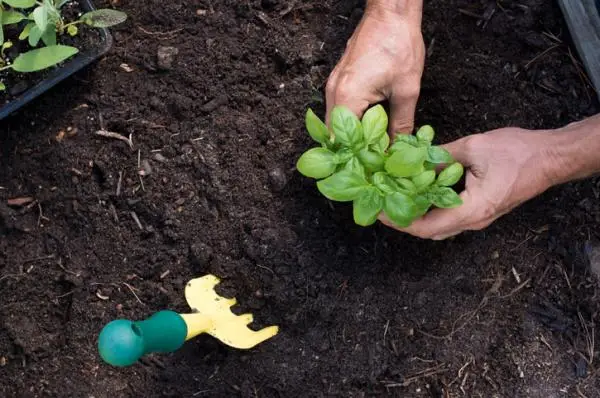The Ocinum basilicum , basil commonly called, is an aromatic plant native to some tropical regions of Asia that takes millennia being cultivated by the hand of man. It is a widely used plant, both culinary and medicinal, and whose use has now spread to practically the whole world.
If you want to learn how to sow and plant basil to grow it at home, keep reading us in this article in which we show you a practical guide for it.
How to sow basil – step by step
To have this plant at home from scratch, first make a note of how to plant the basil seeds
to make them grow. If you want to plant the basil seeds, it is advisable to do it in seedbeds. It is possible to sow it directly in soil or pot, but its opportunities to grow will be much greater in a seedbed with proper care.- Prepare a seedbed with substrate for seedlings, such as coconut fiber and earthworm humus.
- Distribute the small basil seeds on the substrate, spaced about 2 cm apart.
- Water carefully with a watering can with fine jets, thus preventing the water itself from displacing the seeds or burying them. Water to keep the seedbed substrate moist but never watery.
- Locate it where it receives abundant natural light but not drafts, from which you must keep it protected. In addition, the temperature of the environment in which the seedbed is located must never fall below 15ºC.
- Over time, you will see how the seeds change color, adopting a bluish tone, and a few days later begin to germinate. Between 20 and 30 days after sowing, when the seedlings already have between 4 and 6 true leaves, the basil will be ready for transplanting.

How to plant basil – tips
Once the process of germinating the basil is finished , you can move it to transplant it into a larger pot or outside. To know how to plant basil , that is, how to transplant its seedlings or the small plant, follow these tips:
- You must perform the transplant very carefully, carrying the small basil seedlings next to their root ball, without removing the soil or damaging the roots.
- If they are very close to each other, you can transplant them in small groups at once, taking larger root balls to make sure not to damage them.
- For the new pot or outdoor area you can use universal substrate or outdoor plants, although it is worth adding 10% of clay-textured field soil. In addition, a slightly acidic pH is recommended, between 5.7 and 6.2.
How to care for basil and grow it
The care basil are pretty basic, because it is a very undemanding plant.
Location
When talking about how to care for a basil plant, the most important thing is to keep it in a location with as stable a temperature as possible and, above all, away from strong drafts.
Temperature
Since it is a plant of tropical origin, basil stops its growth when it is in low temperatures, so you should not expose it to temperatures below 15 ºC.
Light for the basil plant
Regarding the lighting, put it in a place where it receives abundant natural light, but be careful if the sun is very strong in your area, since an excess of direct and intense sunlight could dry it out. In that case, it is best to find a semi-shady location, especially in summer.
How to water the basil
In addition, you should water this plant whenever you notice dry soil or substrate. Water regularly, but without abusing the quantities, since a ponding is never beneficial for the plant. In the hottest months, it is recommended to do a moderate watering twice a day.
Compost and pruning
You can also fertilize your basil once a month. We recommend using natural and ecological compost, such as worm castings or compost.
This plant must be pruned. To learn how to prune basil, carefully trim its longest stems every two to three weeks, giving it a bushy but controlled size shape. Also, unless you want to get seeds it is good that you eliminate the flowers.

How to preserve basil
To keep basil fresh , it’s best to freeze it. To do this, it is necessary to keep the leaves, clean and dried, in an airtight container and store it in the freezer. You can also freeze the basil as part of a pesto sauce, crushed and mixed with olive oil and salt.
Another option, if you don’t want to freeze it, is to store it in water, but away from direct sunlight. So you can extend the life of the leaves up to about a week, without affecting them as much as if you were freezing them.
